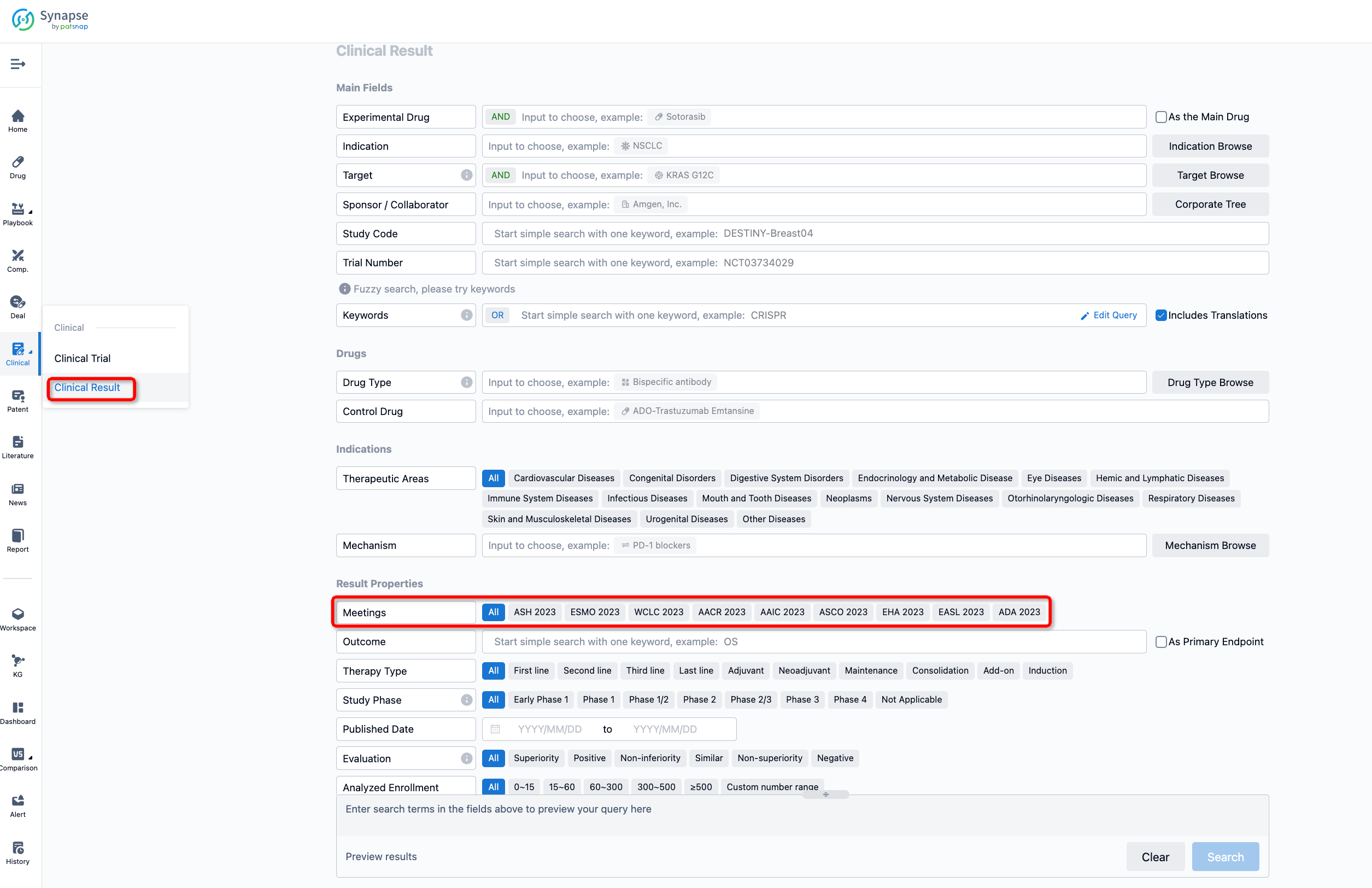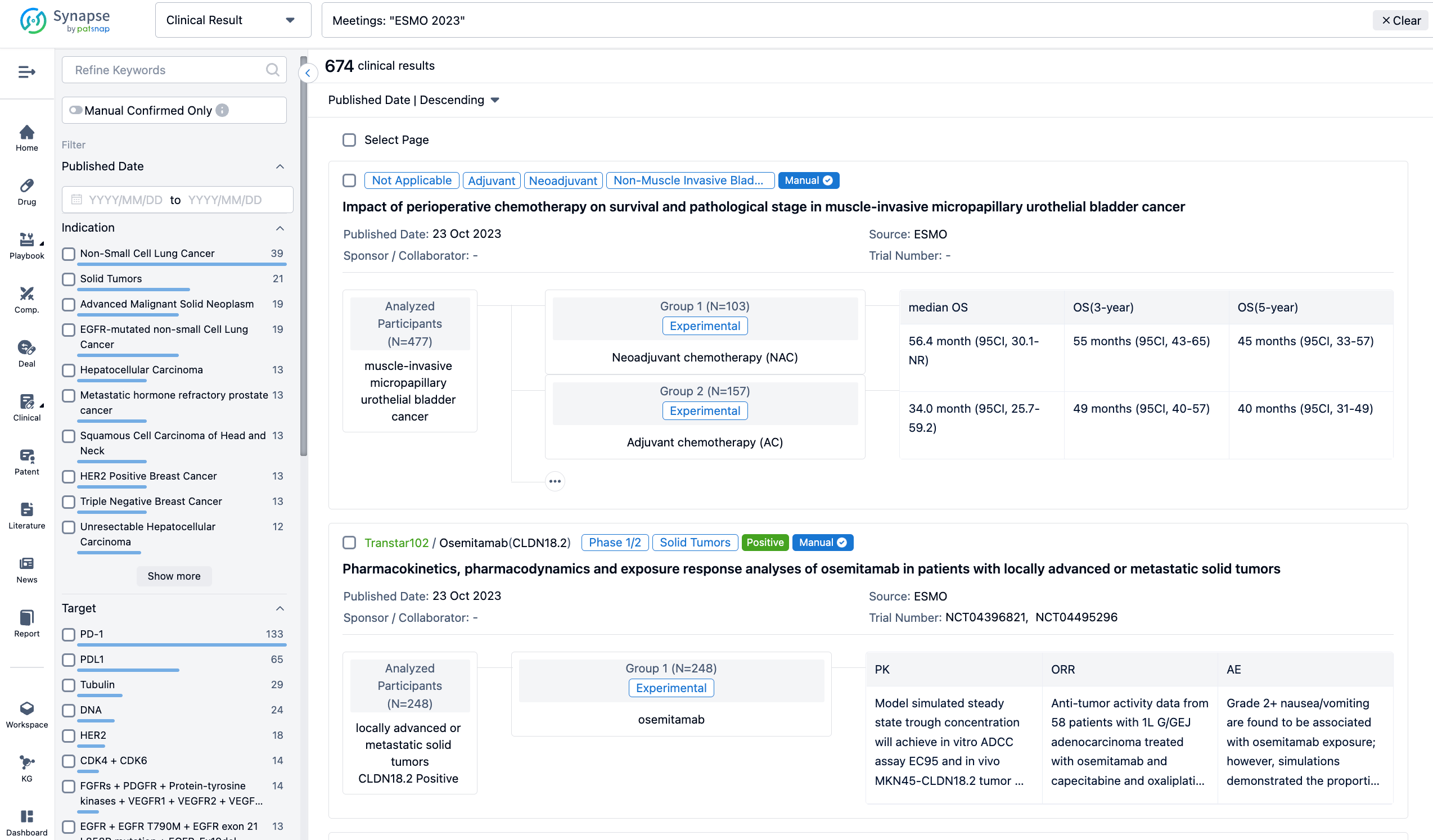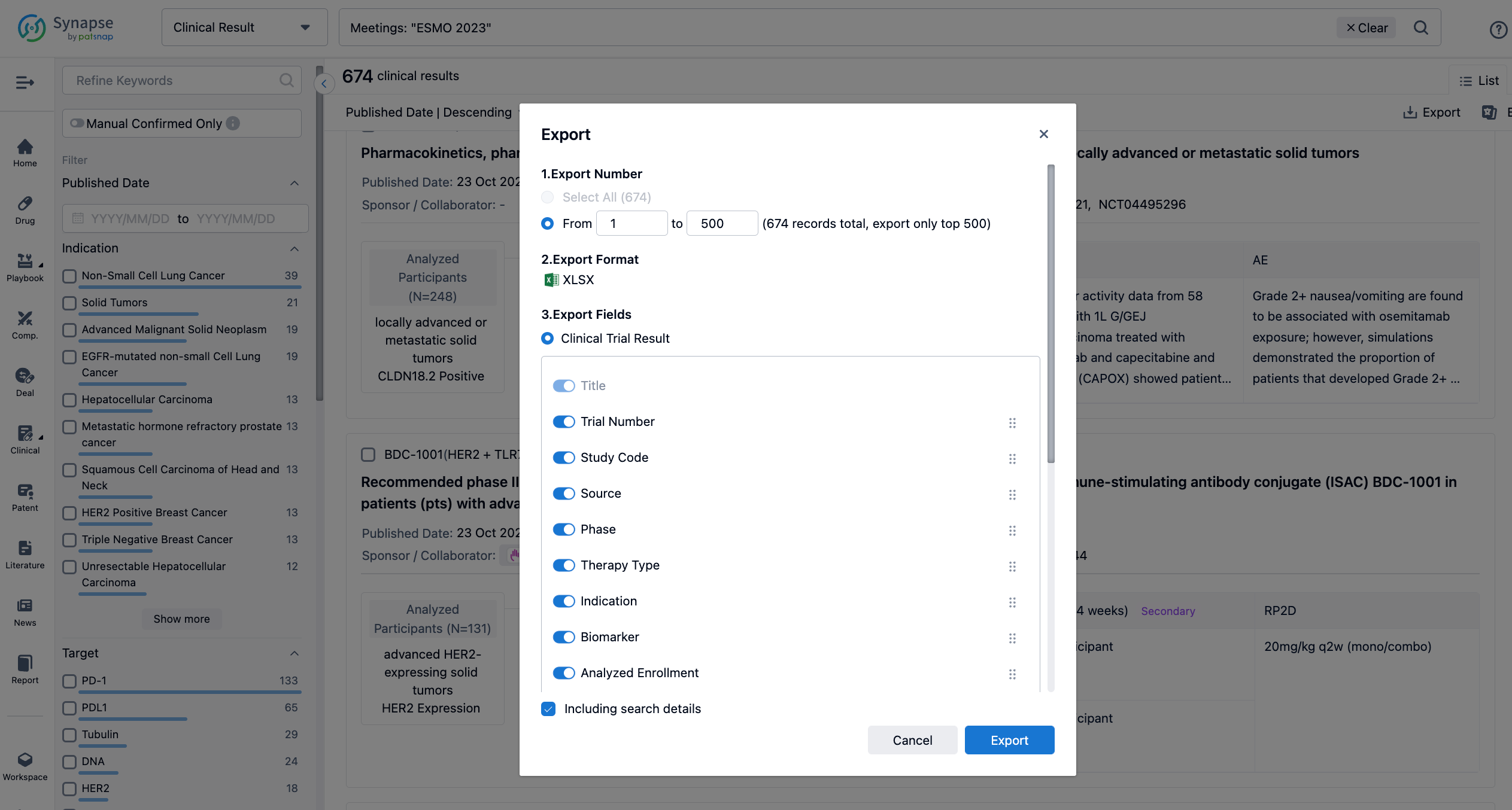Decoding HS-10365: a comprehensive study of its R&D trends and its clinical results in 2023 AACR
Activating RET alterations drive oncogenic signaling in lung, thyroid, and other solid tumors. Until recently, only two RET tyrosine kinase inhibitor (TKI), BLU-667 and LOXO-292, had received approval for advanced NSCLC by FDA and NMPA. And it still had an unmet clinical need in this therapy area. The 2023 AACR Congress set the scene with the revelation of the latest clinical outcomes of HS-10365, a highly potent and selective RET TKI, offering significant insights into its potential therapeutic benefits.
HS-10365's R&D Progress
HS-10365 is a small molecule drug developed by Jiangsu Hansoh Pharmaceutical Co. Ltd. It falls under the category of biomedicine and is primarily targeted towards RET, a protein associated with various diseases. The drug has shown potential in treating neoplasms, endocrinology and metabolic diseases, as well as respiratory diseases.
According to the Patsnap Synapse, Currently, HS-10365 has reached Phase 2 of clinical trials globally. And the clinical trial areas for HS-10365 are primarily in China. The key indication is Malignant Solid Neoplasm. 
Detailed Clinical Result of HS-10365
The single group assignment, open-labeled clinical trial (NCT05207787) was aimed to assess the safety, tolerability, pharmacokinetics (PK), and anti-tumor activity of HS-10365 in RET-altered solid tumors.
In this study, patients (pts) with RET-altered advanced solid tumors, including RET fusion-positive (+) NSCLC, RET-mutated medullary thyroid carcinoma and so on were recruited. They were dosed orally in 21-day cycles. A rule-based accelerated titration combined with 3+3 dose-escalation scheme was used to determine the MTD as the primary endpoint. Secondary endpoints contained safety, PK parameters, ORR and DCR assessed by RECIST V1.1.

The result showed that as of Dec.15th 2022, 31 RET fusion+ NSCLC pts with RET TKI-naïve were received HS-10365 at 6 doses (40 mg QD to 200 mg BID), including 25 previously received platinum-based chemotherapy pts and 6 treatment-naïve pts. Among all fusion variants, 15 pts had KIF5B, 14 pts had CCDC6, and 2 pts were others. Dose limiting toxicity occurred only in one pt. at 200 mg BID (grade 3 hypertension). The MTD was not been defined, and the 160mg BID was the potentially recommended phase II dose. The common (≥25%) TRAEs were AST increase, bilirubin increase, ALT increase, WBC decrease, PLT decrease, neutrophil decrease, serum creatinine increase, prolonged QT interval, hypoalbuminemia and anemia. No pts discontinued treatment owing to AEs. Efficacy data was available for 30 RET fusion+ NSCLC pts with 24 pretreated pts and 6 treatment naïve pts. The ORR was 70.0% (21/30, 95% CI 50.6%-85.3%), with 66.7% (16/24) in pretreated pts and 83.3% (5/6) in treatment naïve pts. Furthermore, the DCR was 96.7% (29/30, 95% CI 82.8%-99.9%), with 95.8% (23/24) in pretreated pts and 100% (6/6) in treatment naïve pts. The longest response time was more than 48 weeks. Meanwhile, 25 of 31 pts remained on treatment and responses were ongoing. Plasma exposure of HS-10365 increased proportionally following single dose and multiple doses. The mean plasma half-life of HS-10365 was 5~9 hours.
It can be concluded that HS-10365 showed a manageable safety profile and favorable PK properties. The promising antitumor activity with expectable response time was observed in RET fusion+ NSCLC pts, no matter with or without previous treatments.
How to Easily View the Clinical Results Using Synapse Database?
If you want to know the other clinical results of popular conferences, please lick on the “Clinical Results” on the homepage of Patsnap Synapse, which provides multi-dimensional screening and filtering of drugs, indications, targets, companies, result evaluation, release date, popular conferences, etc. to help you quickly locate the data you need.
Select the clinical meeting you are interested in, such as ESMO. In the results, you can quickly locate the data you want to view by indication, phase and drug name.
A single result clearly shows important information such as registration number, phase, indication, Sponsor/Collaborator, biomarker, Trial number, dosing regimen and more.
If you would like to view more information about this result, you can go to the result detail page by clicking on the title.
Above the headings, we provide the original source of the outcome data. The basic information is supplemented with more information beyond the list, such as company, study. design, etc.
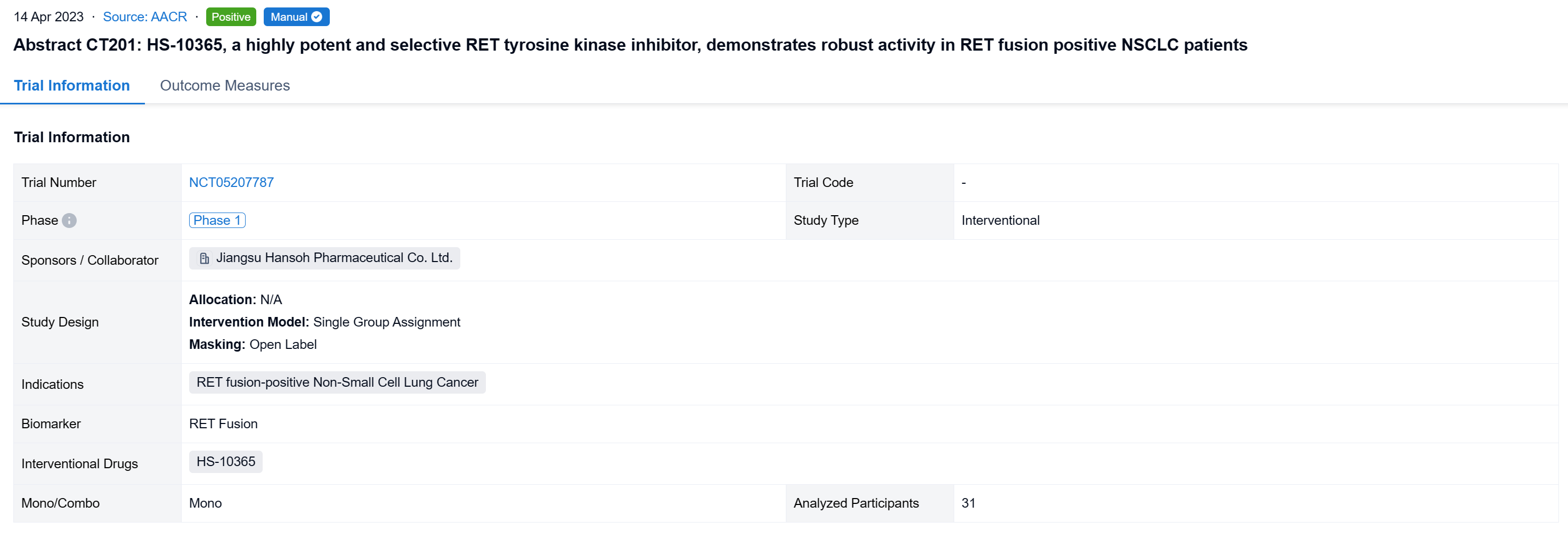
In the important Outcome Measures section, we provide both list and flowchart forms, which are convenient for you to overview the comparison group information and core indicator data.

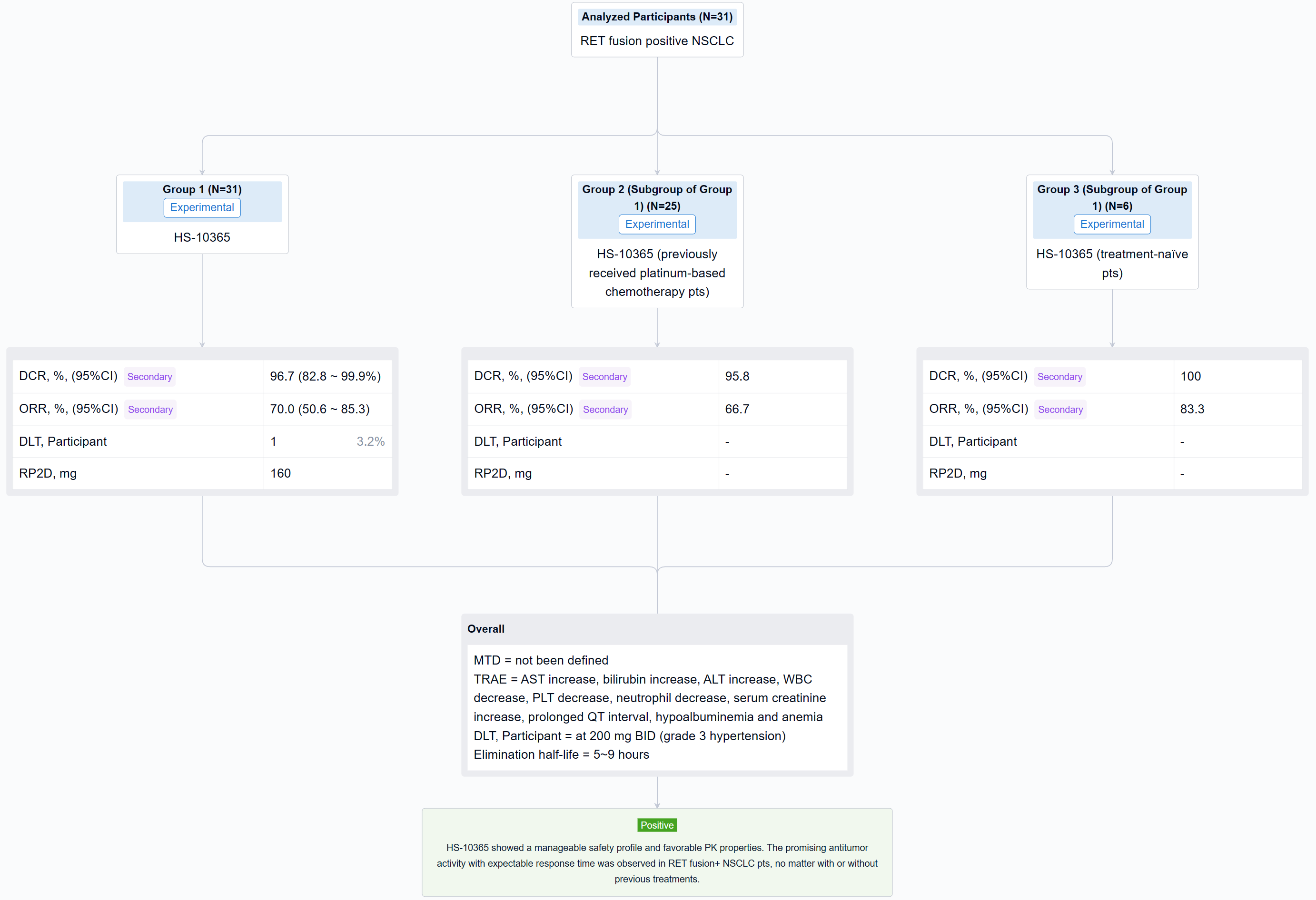
Finally, if you need to download these results, you can conveniently check the check boxes on the left side of the list, or directly click the "Export" button to download the data for personalized analysis and file sharing.
Click on the image below to embark on a brand new journey of drug discovery!


